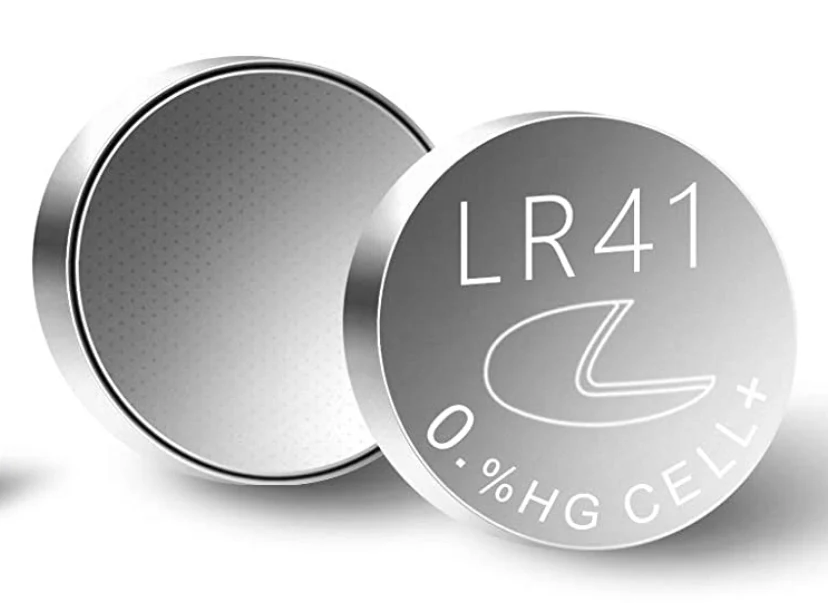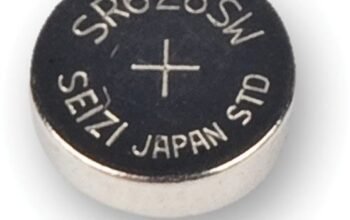Ever had a digital thermometer, laser pointer, or watch suddenly stop working? Chances are, the small but mighty LR41 battery inside it ran out of power. Despite its size, this tiny cell plays a big role in keeping small electronic devices running smoothly. In this guide, we’ll dive deep into what makes the LR41 battery unique, its equivalents, how to replace it, and how to get the most out of it.
What Is an LR41 Battery?
The LR41 battery is a small, round, alkaline button cell designed to power compact electronics. It delivers 1.5 volts and measures approximately 7.9 mm in diameter and 3.6 mm in height.
Because of its small size and consistent performance, it’s often used in:
- Thermometers
- Laser pointers
- Watches
- Small calculators
- Toys
- Hearing aids
- Medical devices
You’ll often find it labeled under different names depending on the brand—like AG3, 192, L736, or GP192—but they all refer to the same general battery type.
“Don’t let its size fool you; the LR41 battery is one of the most widely used miniature power sources in the world.”
What’s the Difference?
Although LR41 and SR41 batteries look identical, they’re chemically different.
| Feature | LR41 (Alkaline) | SR41 (Silver Oxide) |
| Voltage | 1.5V | 1.55V |
| Chemistry | Alkaline | Silver Oxide |
| Shelf Life | 1–2 years | 3–5 years |
| Voltage Stability | Decreases over time | Stable output |
| Cost | Lower | Higher |
| Best For | Toys, thermometers | Watches, medical instruments |
In short:
If you need an affordable option for general use, go with the LR41. But if you need long-term, stable power for precision devices like watches, the SR41 is a better choice.
Equivalent Batteries and Cross Reference Guide
Different manufacturers often use unique codes for the same battery. Here’s a quick reference chart to make things simple:
| Brand | Equivalent Code | Voltage | Chemistry |
| Energizer | 392A | 1.5V | Alkaline |
| Duracell | LR41 | 1.5V | Alkaline |
| Maxell | LR41 | 1.5V | Alkaline |
| GP | 192 | 1.5V | Alkaline |
| Sony | SR41W | 1.55V | Silver Oxide |
Common equivalents: AG3, 192, L736, LR736, G3A, 384, 392A.
When shopping online or in stores, make sure to match the voltage and size rather than just the label—manufacturers often use multiple names for the same product.
How Long Does
An LR41 battery typically lasts 6 months to 1 year, depending on how often the device is used. Its lifespan also depends on:
- Usage frequency – devices that stay on continuously drain power faster.
- Temperature – extreme heat or cold shortens battery life.
- Storage conditions – keeping batteries in a cool, dry place extends life.
Quick tips to extend battery life:
- Remove the battery from devices you won’t use for a while.
- Store extras in their original packaging.
- Avoid touching both terminals with your fingers—it can cause slow discharge.
Case Study: A home thermometer using an LR41 battery lasted 9 months with regular use before showing low battery warnings, whereas a rarely used laser pointer ran for over two years.
How to Replace
Replacing an LR41 battery is simple but must be done carefully to avoid damage.
Step-by-Step Guide
- Turn off the device and open the battery compartment.
- Gently remove the old battery (use tweezers if necessary).
- Insert the new LR41 battery, making sure the positive (+) side faces up.
- Close the compartment and test the device.
- Dispose of the used battery properly.
Safety and Disposal Tips
- Never throw button batteries in household trash.
- Take them to a certified recycling center such as Call2Recycle.
- Keep them out of reach of children—button batteries are a choking hazard and can cause severe internal burns if swallowed.
“A single button cell can cause permanent damage if ingested, so always handle with care.”
Choosing the Right
Not all LR41 batteries are created equal. Quality and longevity vary by brand.
Top reliable brands:
- Duracell LR41
- Energizer 392A
- Maxell LR41
- GP192
- Renata 384
When choosing, look for:
- Mercury-free and leak-resistant designs.
- Fresh production dates — avoid old stock with near-expiry dates.
- Trusted sellers on websites
- Pro tip:
Buying in bulk can save money if you use multiple small devices like thermometers or laser pointers.
Troubleshooting
Even new batteries can fail for several reasons. Here’s what to check:
Common Issues
- Device doesn’t power on: check for proper polarity.
- Battery drains too fast: device might have a short circuit.
- Corrosion inside compartment: caused by leaking old batteries.
How to Test an LR41 Battery
Use a multimeter to measure voltage:
- A healthy LR41 battery should read 1.4–1.5 volts.
- Below 1.2 volts, it’s time to replace it.
Tip: Wipe the terminals with a dry cloth before testing to ensure accurate readings.
Alternatives and Upgrades
If you need longer-lasting power or better voltage stability, you can switch to:
- SR41 (Silver Oxide) – slightly more expensive but provides steadier output.
- LR736 – nearly identical in size and compatible with most LR41 devices.
- Rechargeable options – available for select devices but rare in this size.
When to upgrade:
If your device is critical (like a medical thermometer or hearing aid), go for the SR41 or equivalent silver oxide battery for long-term reliability.
Frequently Asked Questions
Q1: What battery replaces LR41?
You can replace it with AG3, 192, L736, or SR41 depending on your device’s needs.
Q2: Can I use SR41 instead of LR41?
Yes. SR41 batteries are compatible and typically last longer, though they cost slightly more.
Q3: How long do LR41 batteries last in storage?
Stored in a cool, dry place, they can last up to 3 years before losing significant charge.
Q4: Are LR41 and AG3 the same?
Yes — they’re different names for the same battery type.
Q5: Is it safe to use multiple LR41 batteries together?
Only if the device is designed for it. Overloading with extra cells can damage electronics.
Conclusion:
The LR41 battery may be small, but it powers an impressive range of everyday gadgets. From digital thermometers to watches, its reliability and affordability make it a go-to choice for small electronics.
When buying replacements, always check compatibility codes, choose reputable brands, and dispose of old batteries responsibly. With the right care, these button cells can keep your devices running efficiently for months—or even years.
“A tiny power source that keeps the little things in life ticking that’s the LR41 battery.”



